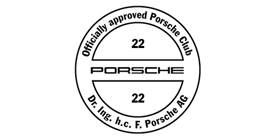Porsche 991.1 Carrera 'Coolant Fault' (Change Over Valve) Diagnosis

Back in July, whilst bedding in my new Girodisc brakes (operating temp: water 90C, oil 103C, in Sport mode, repeated heavy stops), my car suddenly flagged up a 'Coolant Fault'. This was the first time it had ever missed a beat in my ownership and unfortunately was just prior to me attending another high performance driving day, at PEC Silverstone (Arghh).
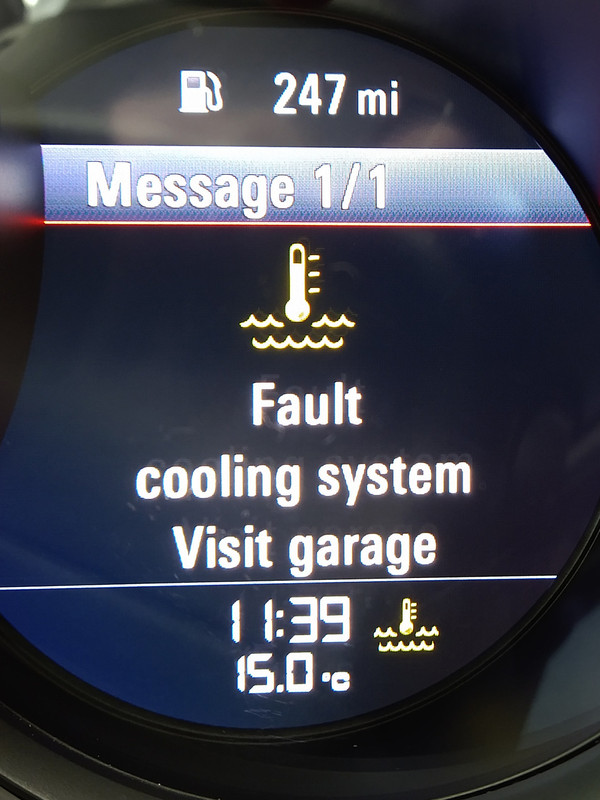
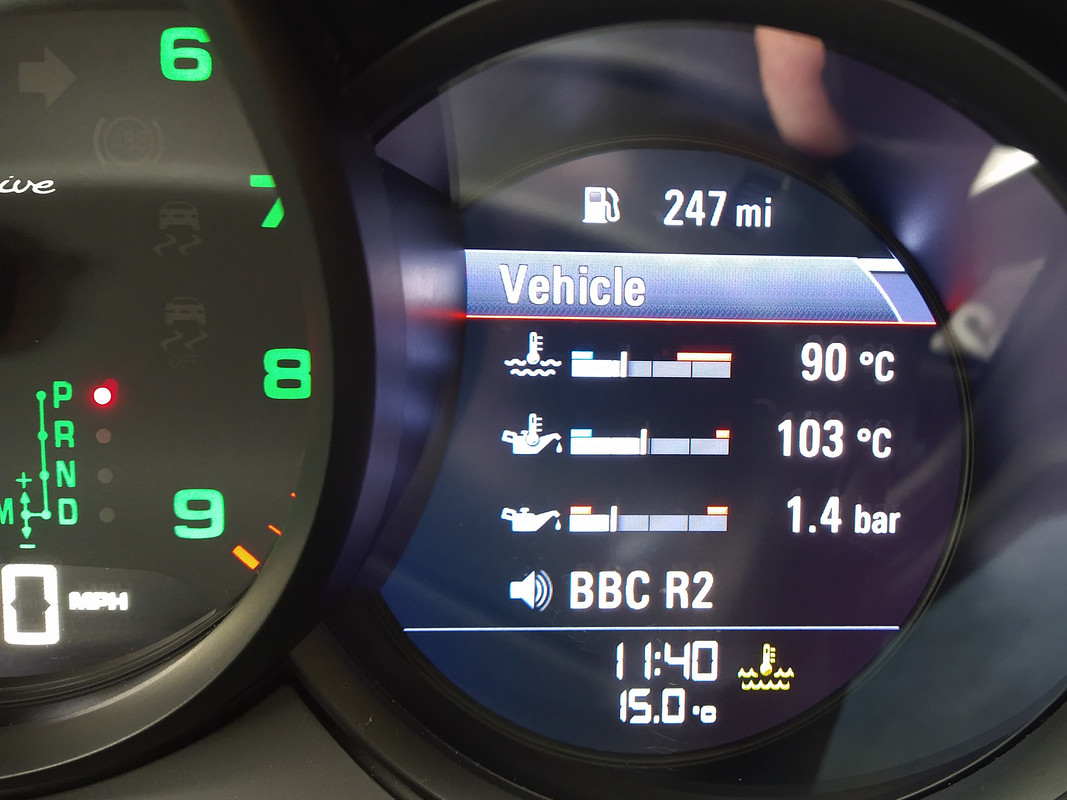
I checked the code with my Foxwell NT530 scanner and it showed as P1433 - (implausible signal) Vacuum Leaks: Basically a leak in the car's vacuum system. This system uses electrical solenoids called COV's (Change Over Valves), to control a range of components, using vacuum actuation. Some are related to thermal management, some to items as diverse as the exhaust flaps for PSE (Porsche Sports Exhaust) - so even though it shows as a coolant fault, it might not be coolant related at all!
My Porsche ( 991.1 C4S Exclusive) has 8 x COVs within the vacuum system - see schematic and list attached.
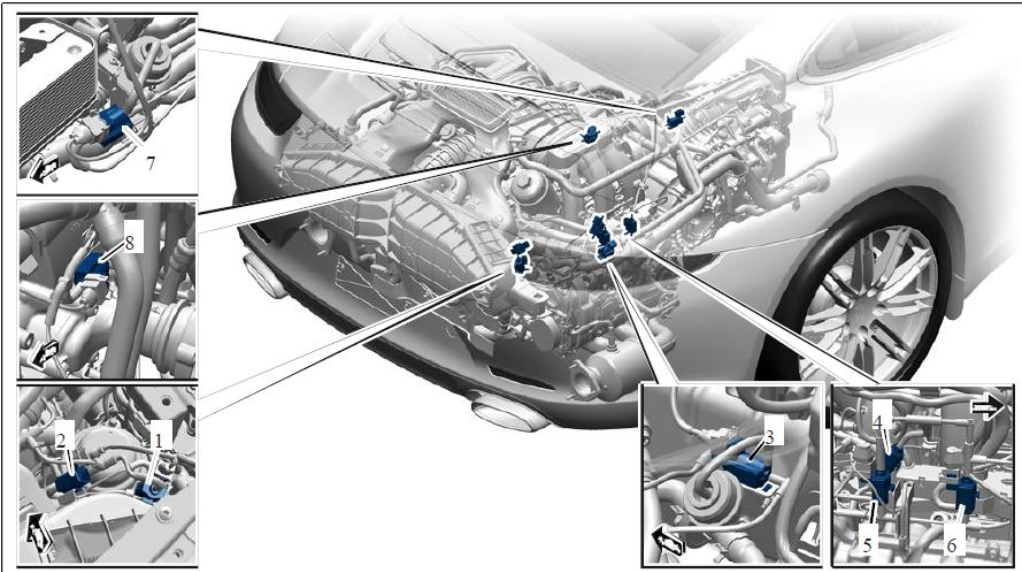
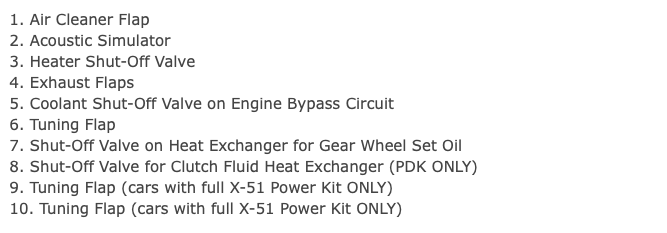
The Power of Google: Having done some research, it seemed unlikely to be an electrical failure of a COV solenoid - more likely a vacuum leak inside a COV, one of the connecting pipes, or even a disconnected pipe - apparently the one for the exhaust flaps can sometimes come loose. My good friend Peter (who helps with any physical work, now my bone cancer prevents me doing much), crawled under the car and checked the exhaust flaps but the pipework underneath was fine.
Active Testing with the Foxwell NT530: Covering all bases, I decided to rule out any chance the solenoids were faulty and used the 'Active Test' function of my Foxwell scanner, to isolate each COV solenoid in turn and test it but each one returned a satisfactory result. So, with the day at Silverstone looming, I cleared the code and took the car for a test drive, travelling the same roads I'd been on when the fault flagged (including a section of very rough tarmac on a country B-road) and after several passes, 'ping' the fault flashed up again.
Given the circumstances, I decided the fault wasn't constant, cleared the code again and a few days later, was off to PEC Silverstone. I had a great time, putting the car through its paces and once up to temperature, it got a thorough shake-down (in Sport & Sport Plus) but all temperatures remained fine, everything worked, no codes flagged and it never skipped a beat.
Testing COVs and Pipework: I don't like leaving things to chance, so once back home, the next step was to remove the rear bumper, active spoiler, air-box etc and start testing. Thanks again to Peter for his invaluable help!
Note: Any DIY competent home mechanic, can remove the rear lights, bumper and active spoiler - if you don't have the knowledge or a manual, there are guides on how to do this on YouTube. Just get someone to help lift things off and don't switch the ignition on whilst the spoiler is off, or you'll have to re-calibrate the spoiler end positions. Any codes that are stored when removing the rear bumper, such as rear lights, can be cleared with an OBD scanner, once the work is completed.
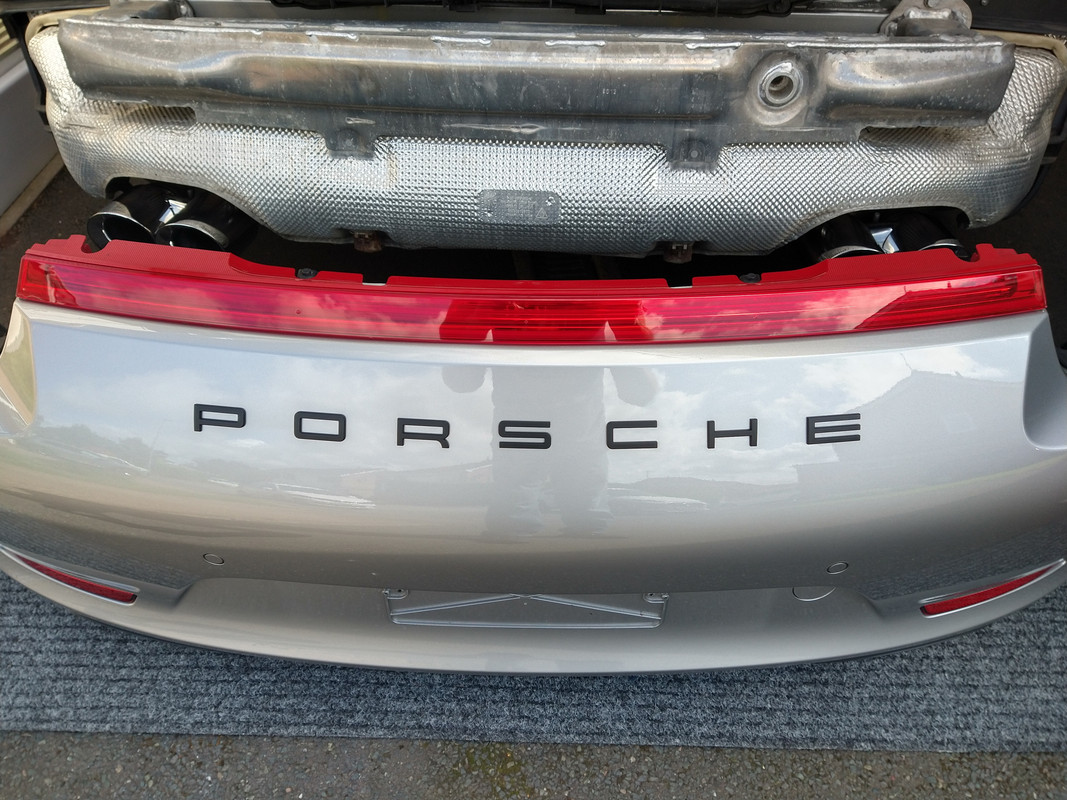
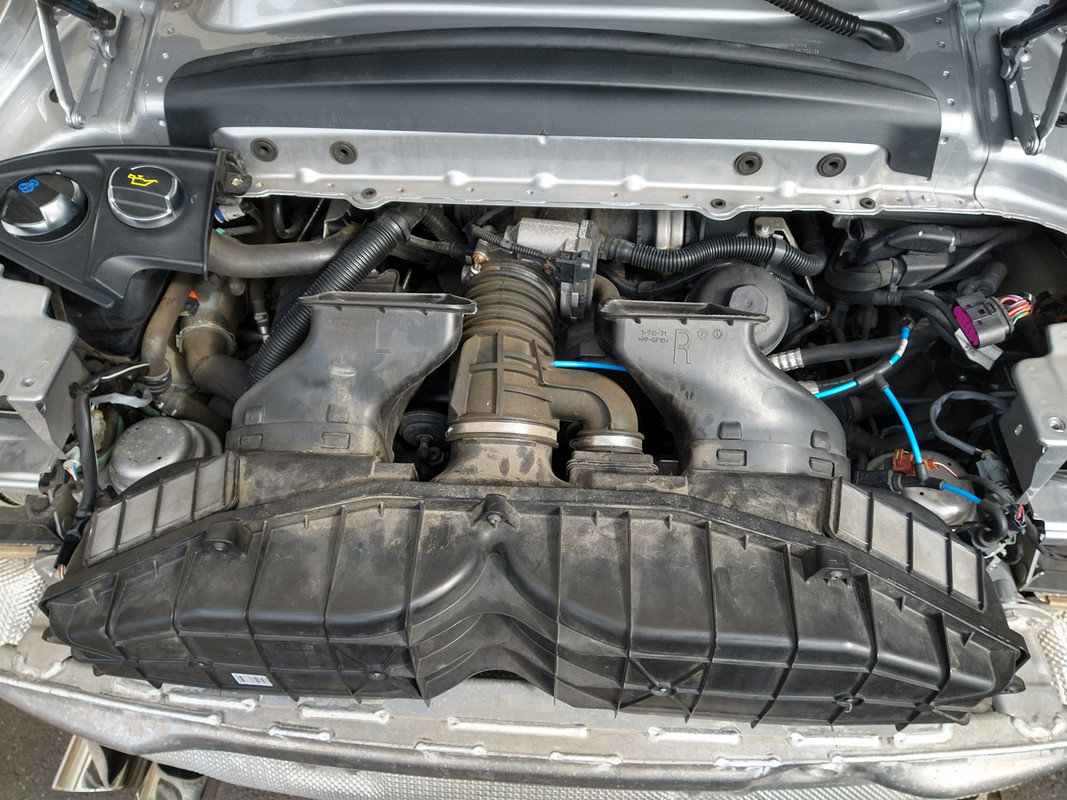
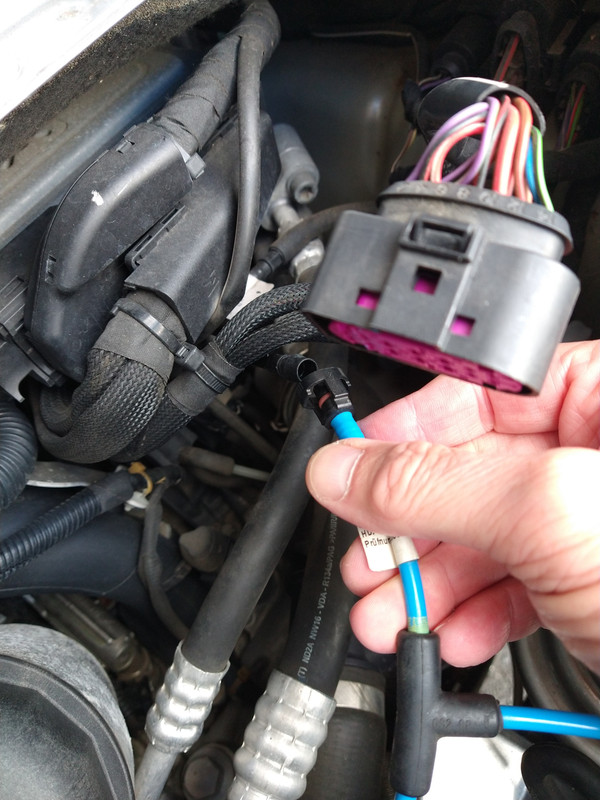
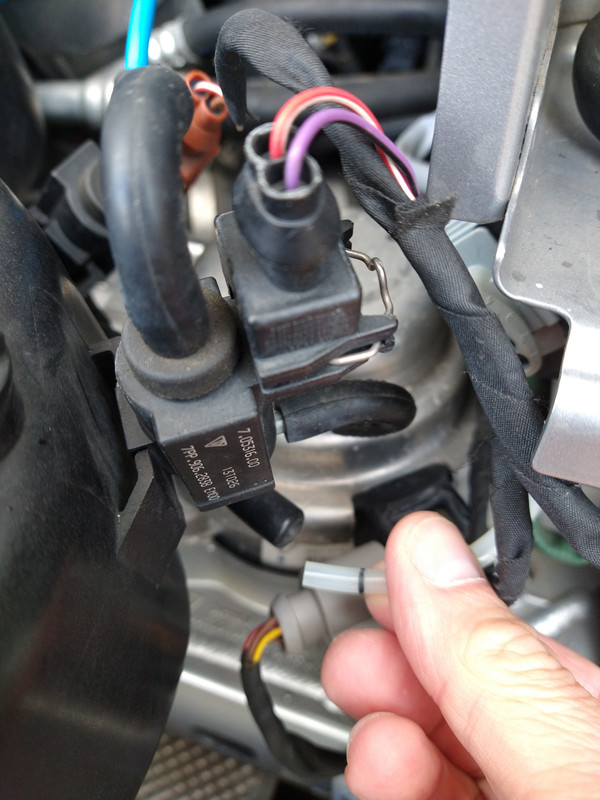
Part of the process is removing the air-feed (fresh air) blue pipes, electrical connectors and air-box - so you can more easily access the COVs, at the top of the engine.
Each COV has 3 connections - 1) an air inlet 2) a vacuum outlet - to the controlled component and 3) a common vacuum inlet.

Using my vacuum pump, we tested the vacuum inlet/outlet of each COV in turn (working from the back of the car forwards). All the COVs checked out fine. The only two we couldn't check (due to access), were the ones underneath on the PDK (Heat Exchanger for Gear Oil / Clutch Fluid Heat Exchanger), as you need a lift for those. Each COV held circa -25 to -27 inHg, for 3 minutes - proving their integrity (in a static situation).
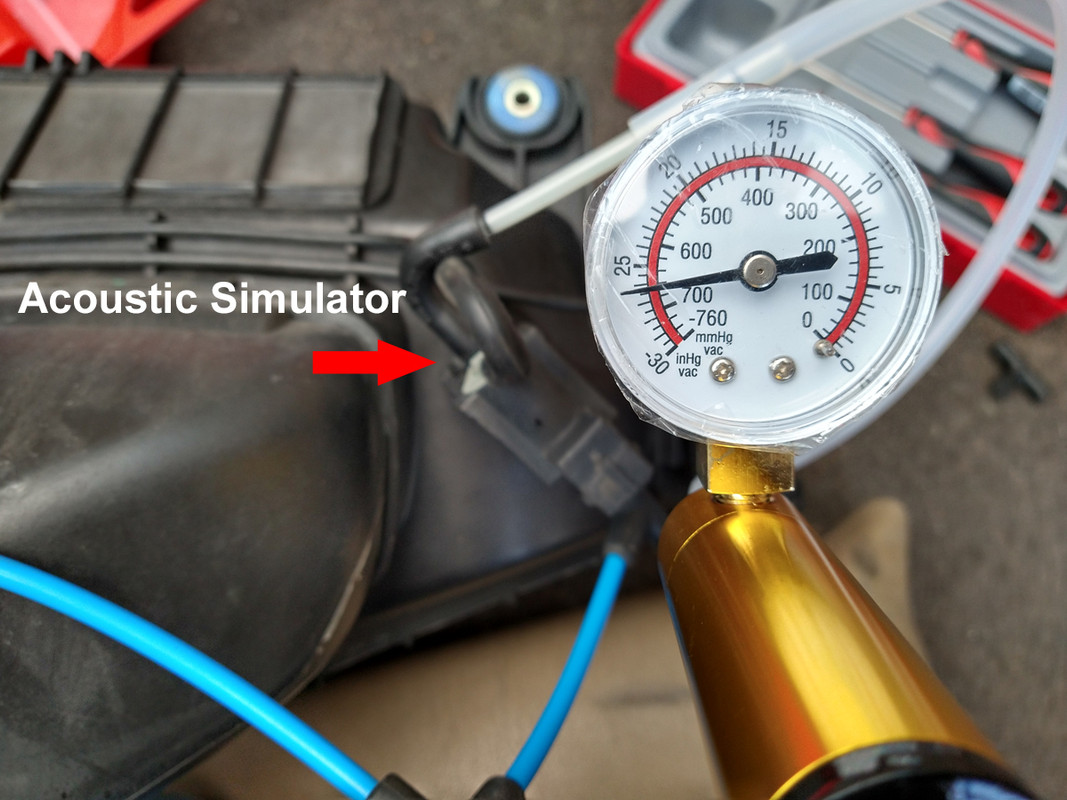


Close Up of Exhaust Flap COV and Coolant Shut-Off Engine Bypass
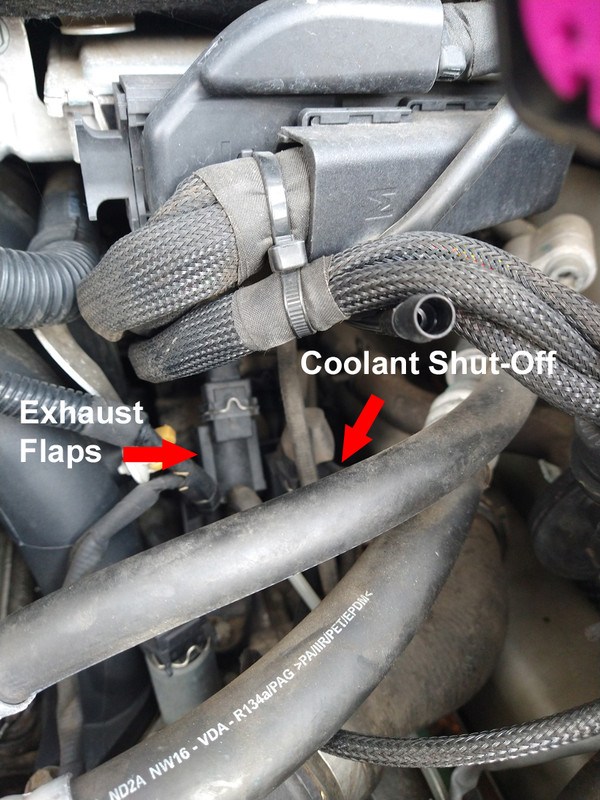
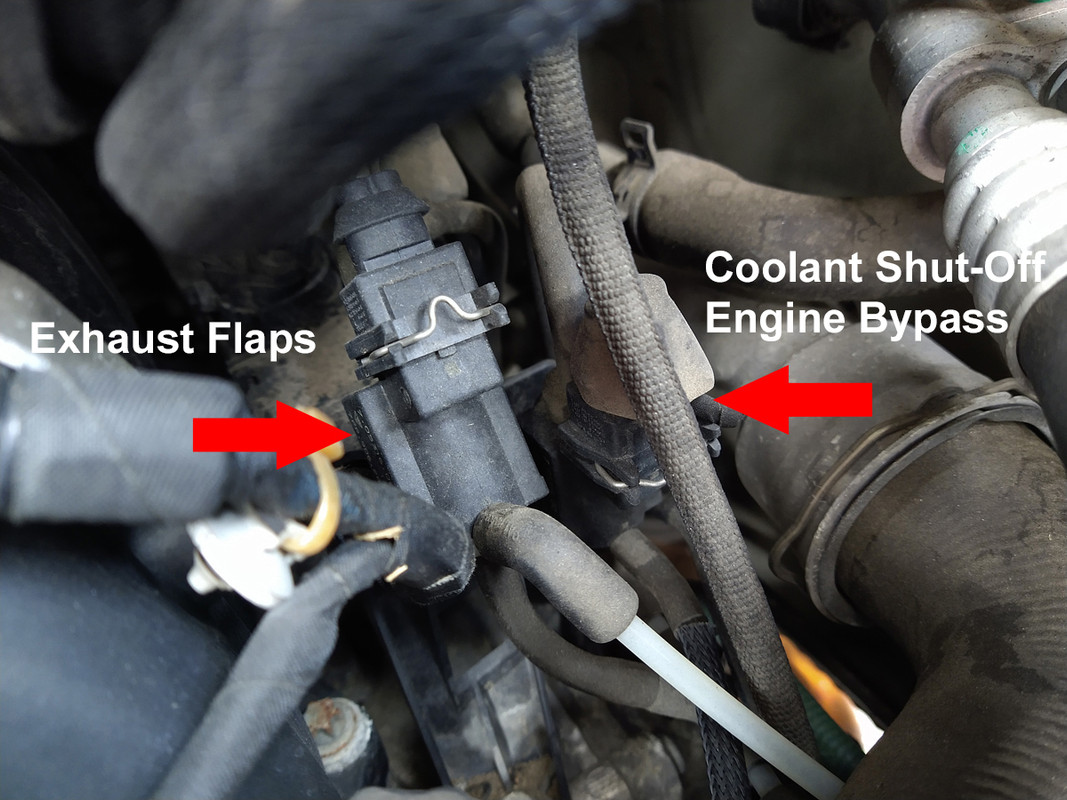
When dismantling the car, we'd noticed that one of the plastic vacuum pipes (the one that will most often be disconnected when removing the air-box) didn't seem to be very solidly located into the rubber T-piece and also the one that connects between the two COVs on the air-box (controlling the Acoustic Simulator and Air Cleaner Flap), wasn't fully home - you can see a black ring around the plastic pipe and this should be seated, all the way into the rubber connector.
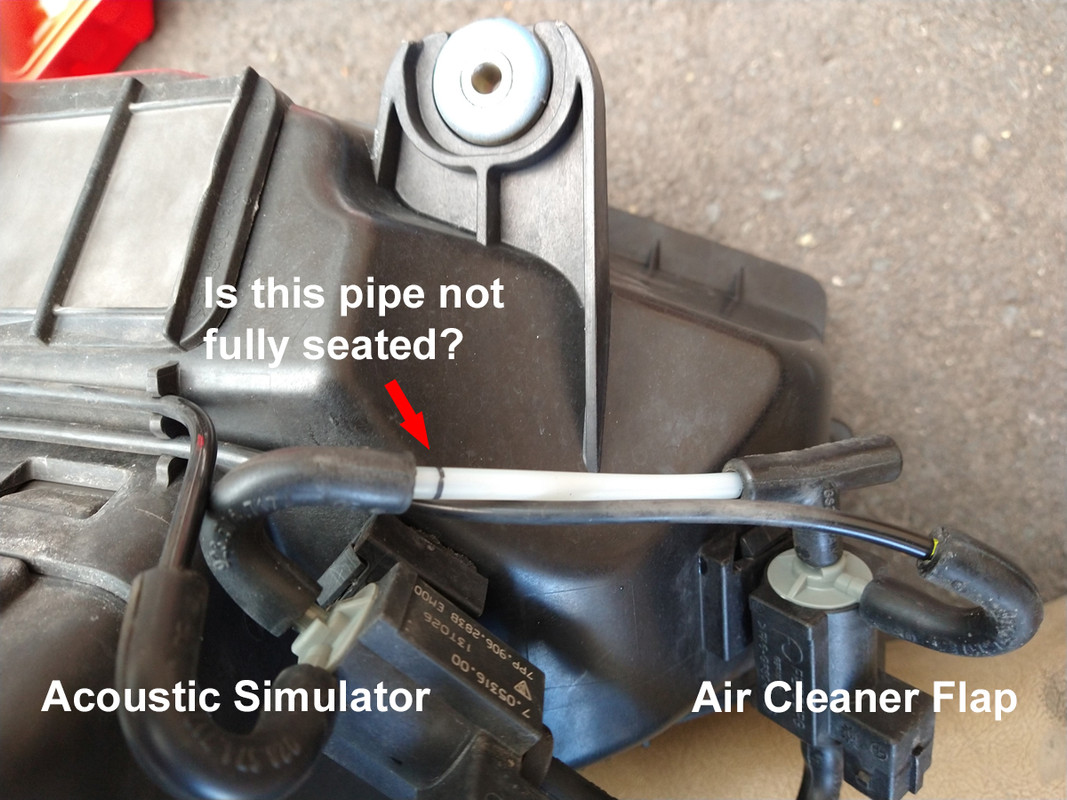
We then checked the vacuum integrity of the accessible connecting pipework, to make sure there were no obvious leaks. Again all checked out fine (at the time of testing), with the pipework consistently holding over -27 inHg, for 3 minutes.
Attaching a smoke machine can help identify leaking pipework but few people have one at home and it isn't an absolute must.
Conclusion & Solution: Given that the fault occurred on my car, on an exceptionally rough stretch of tarmac, on a rural road I rarely travel, I wondered whether a combination of extreme vibration and a couple of pipes that weren't seated 100%, created a temporary fault? It only takes a momentary loss of vacuum to create this fault, so that would seem plausible and as after clearing the fault code, I drove more than 200 miles to Silverstone & back and hard on-track in Sport/Plus without incident, that also pointed to something very specific.
As a consequence, I purchased some new OEM rubber fittings, to replace any that looked tired (the car is 10 years old after all), seated the plastic pipes fully and then zip tied them, for added security.
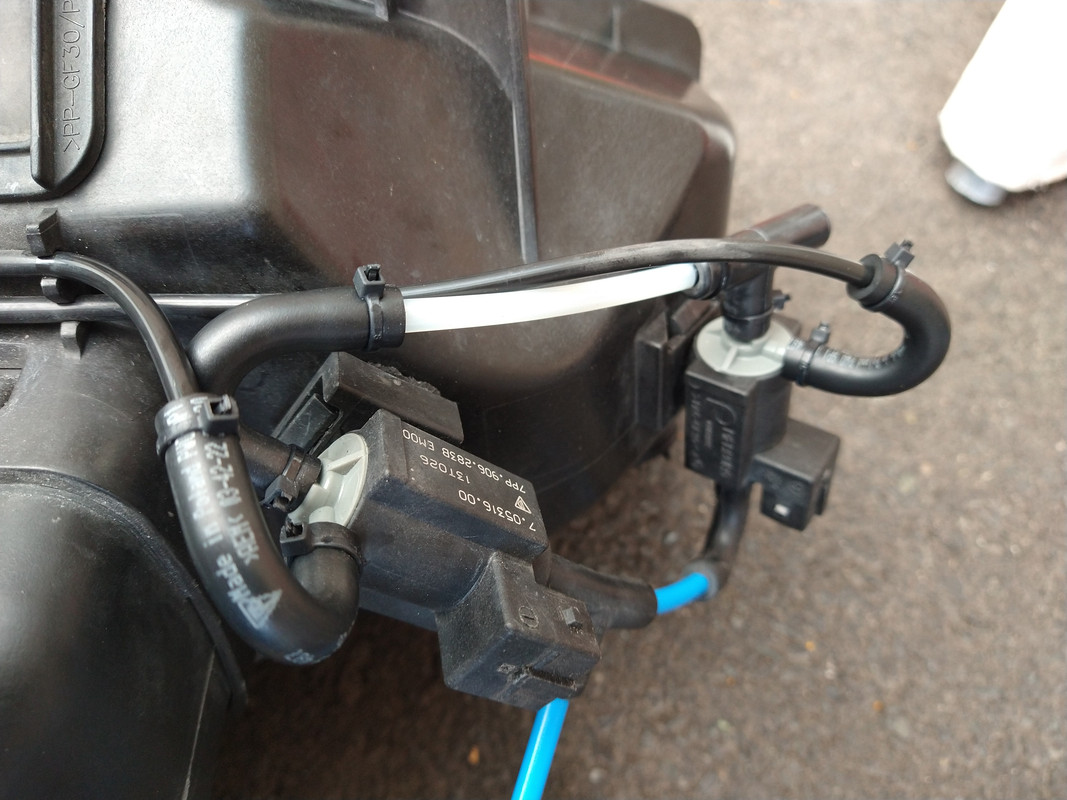
I've driven the car around 200 miles since, on A roads, B roads and Motorway and whilst I haven't been back to that specific section of rough tarmac (yet), so far everything's been fine.
There have been numerous iterations of these COV solenoids over the years, with some owners having several versions fitted to their car, during their ownership: One point worthy of note, in my investigations I noticed there was a Porsche Technical Bulletin from 2015 (referenced at the top of an excellent Blog, by a user called Plenum), that mentioned any replacement of COVs, should now use a specific part number for each installed location - my understanding is that the original system used the same part, irrespective of installed location (though I'm happy to be corrected).
IMPORTANT: It's important to note, that there isn't just one cause for this fault and therefore there isn't just one solution. One answer is no more 'right' than another - only the one that fixes that particular car. The work I've undertaken, seems to have fixed the problem on my car but this post isn't to suggest, that what I found is the answer - in fact my vibration related loss of vacuum, may be an outlier! I've given an overview of the 991 Carrera vacuum system, to help give fellow owners some insight but not attempted to cover all the possible causes, which include but are not limited to: Faulty COV units, rusty COVs (internal condensation), leaking vacuum pipework (as in my case), leaking coolant caps - which sometimes warp, coolant contamination of the vacuum system and other system related components (different codes), such as the Map Controlled Thermostat - which can all give rise to the same 'Coolant Fault' warning.
Anyway, I hope some of that's been useful and am keeping my finger's crossed that my work on securing the pipework, bears fruit long-term.
Mark Davis (AKA: 911Time)
Note: A million thanks to my good friend Peter, for his hard work and enabling me, to vicariously continue tinkering with cars

COV Schematic/Image: Courtesy of Plenum's very useful page!
http://plenums.blogspot.com/.../porsche-991-cov-vacuum...

Back in July, whilst bedding in my new Girodisc brakes (operating temp: water 90C, oil 103C, in Sport mode, repeated heavy stops), my car suddenly flagged up a 'Coolant Fault'. This was the first time it had ever missed a beat in my ownership and unfortunately was just prior to me attending another high performance driving day, at PEC Silverstone (Arghh).


I checked the code with my Foxwell NT530 scanner and it showed as P1433 - (implausible signal) Vacuum Leaks: Basically a leak in the car's vacuum system. This system uses electrical solenoids called COV's (Change Over Valves), to control a range of components, using vacuum actuation. Some are related to thermal management, some to items as diverse as the exhaust flaps for PSE (Porsche Sports Exhaust) - so even though it shows as a coolant fault, it might not be coolant related at all!
My Porsche ( 991.1 C4S Exclusive) has 8 x COVs within the vacuum system - see schematic and list attached.


The Power of Google: Having done some research, it seemed unlikely to be an electrical failure of a COV solenoid - more likely a vacuum leak inside a COV, one of the connecting pipes, or even a disconnected pipe - apparently the one for the exhaust flaps can sometimes come loose. My good friend Peter (who helps with any physical work, now my bone cancer prevents me doing much), crawled under the car and checked the exhaust flaps but the pipework underneath was fine.
Active Testing with the Foxwell NT530: Covering all bases, I decided to rule out any chance the solenoids were faulty and used the 'Active Test' function of my Foxwell scanner, to isolate each COV solenoid in turn and test it but each one returned a satisfactory result. So, with the day at Silverstone looming, I cleared the code and took the car for a test drive, travelling the same roads I'd been on when the fault flagged (including a section of very rough tarmac on a country B-road) and after several passes, 'ping' the fault flashed up again.
Given the circumstances, I decided the fault wasn't constant, cleared the code again and a few days later, was off to PEC Silverstone. I had a great time, putting the car through its paces and once up to temperature, it got a thorough shake-down (in Sport & Sport Plus) but all temperatures remained fine, everything worked, no codes flagged and it never skipped a beat.
Testing COVs and Pipework: I don't like leaving things to chance, so once back home, the next step was to remove the rear bumper, active spoiler, air-box etc and start testing. Thanks again to Peter for his invaluable help!
Note: Any DIY competent home mechanic, can remove the rear lights, bumper and active spoiler - if you don't have the knowledge or a manual, there are guides on how to do this on YouTube. Just get someone to help lift things off and don't switch the ignition on whilst the spoiler is off, or you'll have to re-calibrate the spoiler end positions. Any codes that are stored when removing the rear bumper, such as rear lights, can be cleared with an OBD scanner, once the work is completed.




Part of the process is removing the air-feed (fresh air) blue pipes, electrical connectors and air-box - so you can more easily access the COVs, at the top of the engine.
Each COV has 3 connections - 1) an air inlet 2) a vacuum outlet - to the controlled component and 3) a common vacuum inlet.

Using my vacuum pump, we tested the vacuum inlet/outlet of each COV in turn (working from the back of the car forwards). All the COVs checked out fine. The only two we couldn't check (due to access), were the ones underneath on the PDK (Heat Exchanger for Gear Oil / Clutch Fluid Heat Exchanger), as you need a lift for those. Each COV held circa -25 to -27 inHg, for 3 minutes - proving their integrity (in a static situation).



Close Up of Exhaust Flap COV and Coolant Shut-Off Engine Bypass


When dismantling the car, we'd noticed that one of the plastic vacuum pipes (the one that will most often be disconnected when removing the air-box) didn't seem to be very solidly located into the rubber T-piece and also the one that connects between the two COVs on the air-box (controlling the Acoustic Simulator and Air Cleaner Flap), wasn't fully home - you can see a black ring around the plastic pipe and this should be seated, all the way into the rubber connector.

We then checked the vacuum integrity of the accessible connecting pipework, to make sure there were no obvious leaks. Again all checked out fine (at the time of testing), with the pipework consistently holding over -27 inHg, for 3 minutes.
Attaching a smoke machine can help identify leaking pipework but few people have one at home and it isn't an absolute must.
Conclusion & Solution: Given that the fault occurred on my car, on an exceptionally rough stretch of tarmac, on a rural road I rarely travel, I wondered whether a combination of extreme vibration and a couple of pipes that weren't seated 100%, created a temporary fault? It only takes a momentary loss of vacuum to create this fault, so that would seem plausible and as after clearing the fault code, I drove more than 200 miles to Silverstone & back and hard on-track in Sport/Plus without incident, that also pointed to something very specific.
As a consequence, I purchased some new OEM rubber fittings, to replace any that looked tired (the car is 10 years old after all), seated the plastic pipes fully and then zip tied them, for added security.

I've driven the car around 200 miles since, on A roads, B roads and Motorway and whilst I haven't been back to that specific section of rough tarmac (yet), so far everything's been fine.
There have been numerous iterations of these COV solenoids over the years, with some owners having several versions fitted to their car, during their ownership: One point worthy of note, in my investigations I noticed there was a Porsche Technical Bulletin from 2015 (referenced at the top of an excellent Blog, by a user called Plenum), that mentioned any replacement of COVs, should now use a specific part number for each installed location - my understanding is that the original system used the same part, irrespective of installed location (though I'm happy to be corrected).
IMPORTANT: It's important to note, that there isn't just one cause for this fault and therefore there isn't just one solution. One answer is no more 'right' than another - only the one that fixes that particular car. The work I've undertaken, seems to have fixed the problem on my car but this post isn't to suggest, that what I found is the answer - in fact my vibration related loss of vacuum, may be an outlier! I've given an overview of the 991 Carrera vacuum system, to help give fellow owners some insight but not attempted to cover all the possible causes, which include but are not limited to: Faulty COV units, rusty COVs (internal condensation), leaking vacuum pipework (as in my case), leaking coolant caps - which sometimes warp, coolant contamination of the vacuum system and other system related components (different codes), such as the Map Controlled Thermostat - which can all give rise to the same 'Coolant Fault' warning.
Anyway, I hope some of that's been useful and am keeping my finger's crossed that my work on securing the pipework, bears fruit long-term.
Mark Davis (AKA: 911Time)
Note: A million thanks to my good friend Peter, for his hard work and enabling me, to vicariously continue tinkering with cars

COV Schematic/Image: Courtesy of Plenum's very useful page!
http://plenums.blogspot.com/.../porsche-991-cov-vacuum...


